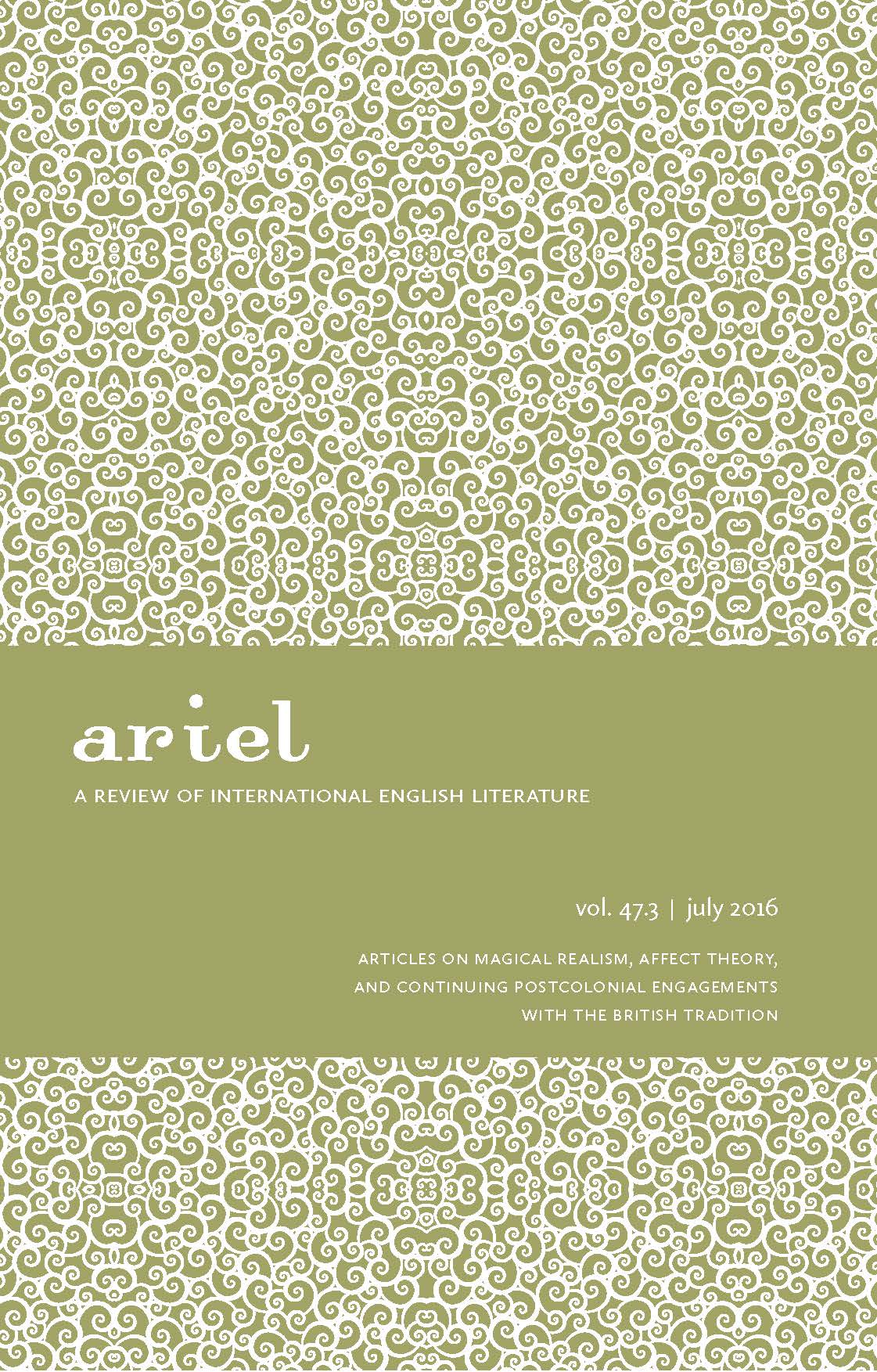Enclosure, Dispersal, and <i>The Enigma of Arrival</i>
Keywords:
V. S. Naipaul, enclosure, dispersal, lyric form, landscapeAbstract
“Enclosure”is a powerful interpretive key to V. S. Naipaul’s The Enigma of Arrival, a word that can stand for any contained or bounded space as well as the processes or logics of forming such containment, on historical, phenomenological, textual, and subjective registers. A national community, a spatial enclosure, a picturesque image, a literary text, or a human body are all connected figures of enclosure in the text, bodies with borders (or skins) that guard their integrity. I trace how these figures are traversed by countervailing logics of dispersal, where dispersal implies the dissipation of the coherence of a self-contained form. I argue that the tension between logics of enclosure and dispersal centrally motivates the formal project of the novel. My argument is especially interested in illuminating the significance of Romantic lyric form to the novel’s project of formal “gathering,” and to its role in forming a writerly subjectivity that would seek to reconcile the dispersed materials of its composition.


